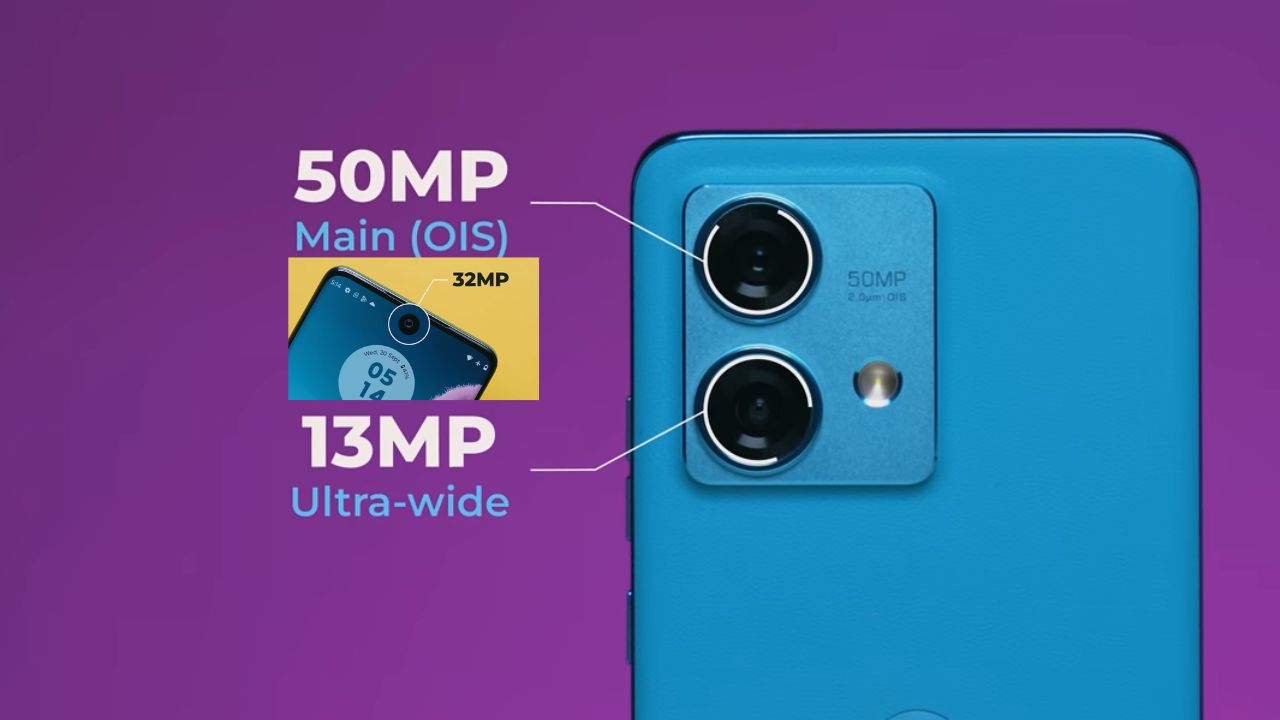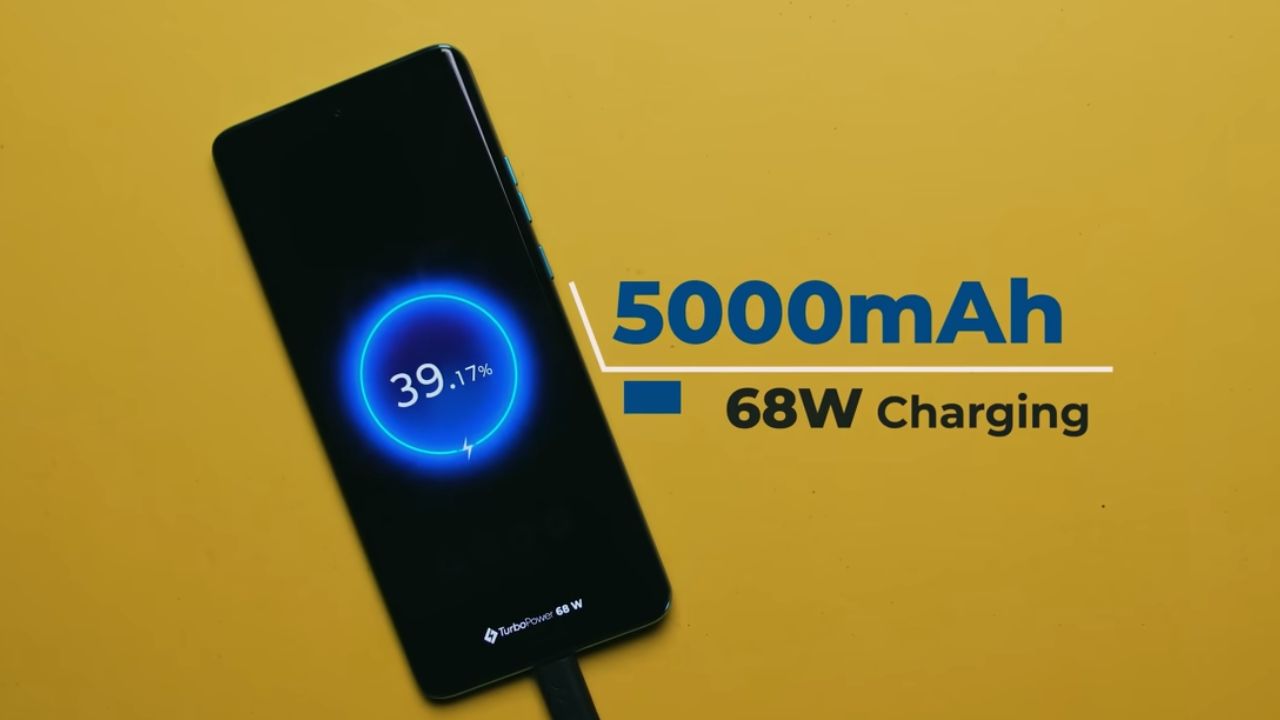Motorola has recently unveiled its latest addition, the Motorola Edge 40 Neo. Boasting a 144 Hz refresh rate and an IP68 certification, it appears to be a strong contender in the category of smartphones priced under $500. In this review, we’ll explore whether it lives up to these claims.
In summary
For those who typically prioritize price when shopping for a smartphone, the Motorola Edge 40 Neo offers a pleasant surprise. It’s currently available in EMEA, starting at €399, which is roughly around $430.
However, it becomes evident that it doesn’t quite match the quality of the Motorola Edge Plus 2023 or the Motorola Edge 2023, both of which we’ve reviewed in the same price range.
A quick look at the specs reveals some impressive features for a mid-range device, including a 144 Hz refresh rate and an IP68 certification. These are typically not expected at this price point. Additionally, the device packs a 5,000 mAh battery that can be rapidly charged with the included 68W TurboCharger.
Running on Android 13, the smartphone feels comfortable to hold with its faux leather finish. It particularly shines with its 50 MP dual camera setup, delivering impressive results during daytime photography.
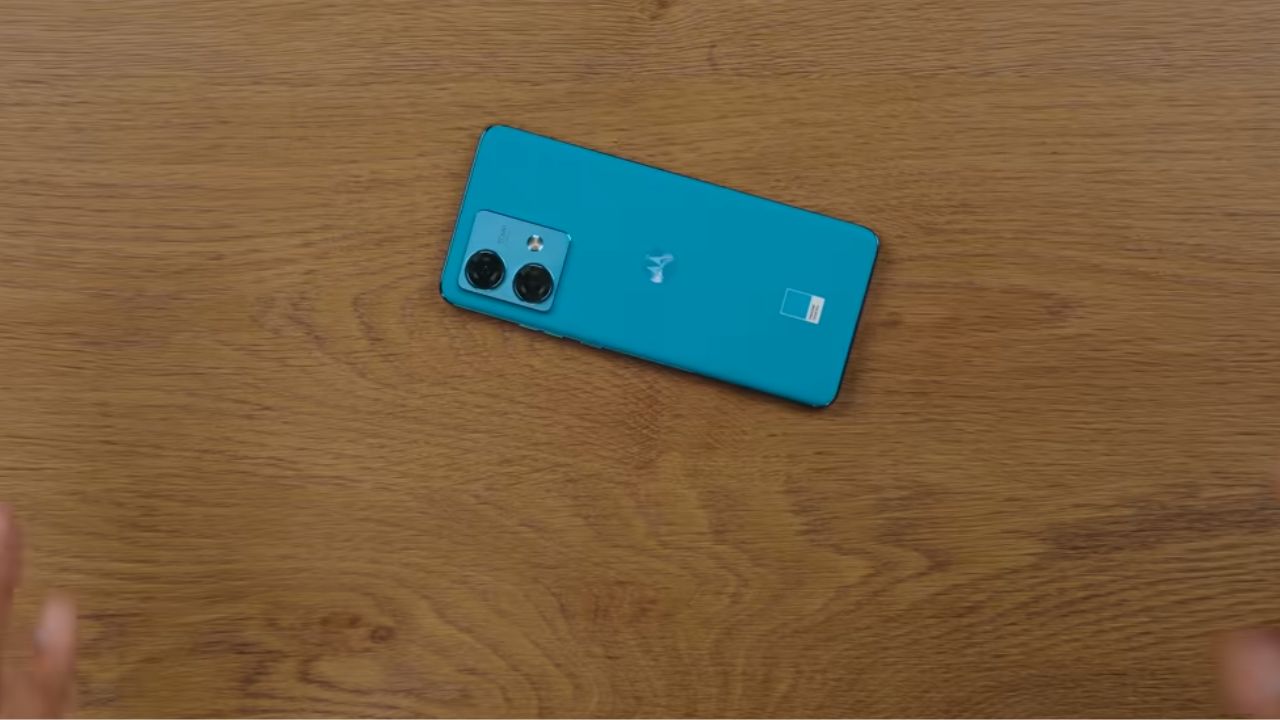
The only potential concern might be the MediaTek Dimensity 7030 SoC, primarily because Qualcomm still holds a better reputation in the realm of phone chipsets. With 12 GB of RAM and 256 GB of internal storage, you’re well-equipped for various tasks and applications.
All in all, there’s not much to complain about with the Motorola Edge 40 Neo. While it may not lead the pack in terms of update policies, offering three major system updates makes it more than adequate. Therefore, the Motorola Edge 40 Neo easily earns a recommendation with a solid rating of 4.5 stars.
Build Quality and Motorola Edge 40 Neo Design
The Motorola Edge 40 Neo comes in a choice of three colors: PANTONE Black Beauty, PANTONE Soothing Sea, and PANTONE Caneel Bay. Our review unit sports a stylish dark cyan hue with the hexadecimal color code #00849f, which adds to its visual appeal.
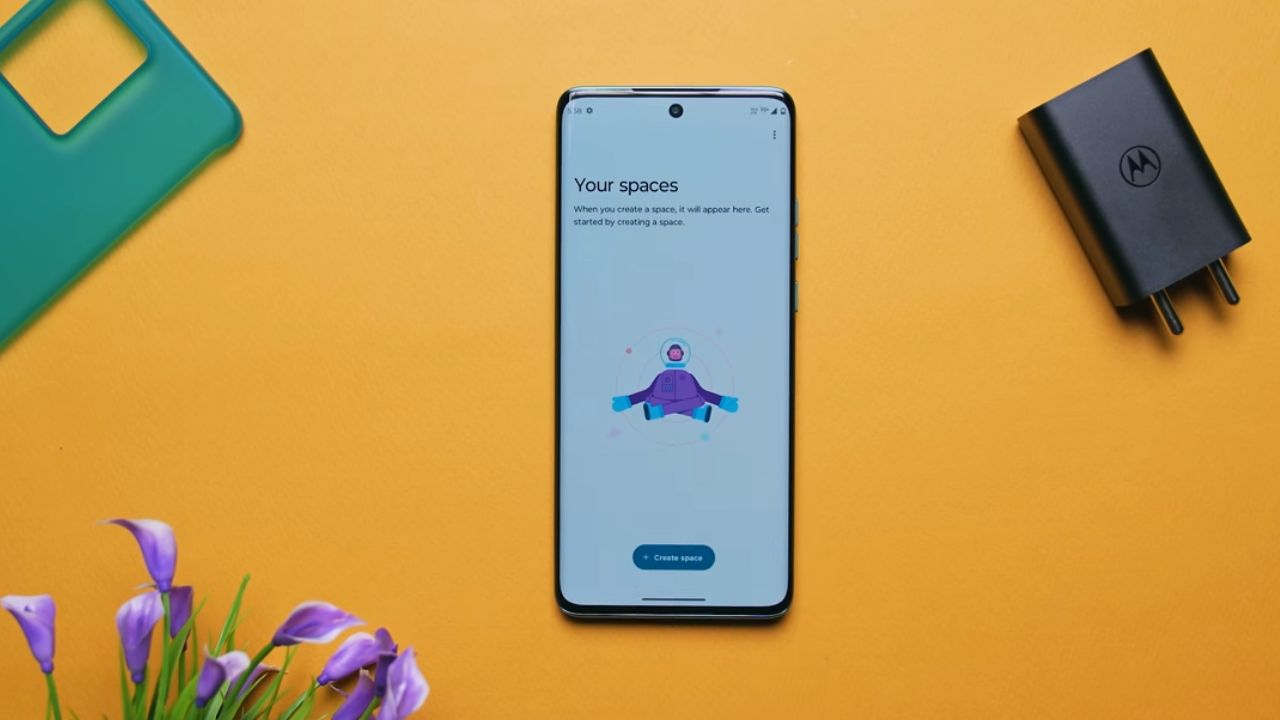
In terms of size, it measures 159.63 x 71.99 x 7.79 mm, and despite the imitation leather back, it’s impressively lightweight at just 165 g. Holding the Edge 40 Neo in your hand feels comfortable and secure.
Pros:
- Rating IP68.
- Fashionable colors.
- Superb craftsmanship.
- Grip is solid.
Cons:
- No 3.5 mm jack.
When you examine all three models of the Edge 40 series, you’ll find that there aren’t many noticeable visual differences among them. The design language they share is quite consistent and visually appealing. The build quality is typically high, and there are no issues with the placement of buttons, the tactile response, or the overall haptic feedback.
What’s particularly pleasing is that this mid-range handset, priced at €399 each, offers stereo sound and Dolby Atmos support, in addition to being IP68 certified for dust and water protection.
Motorola Edge 40 Neo Display
Motorola has a well-established reputation for pushing the envelope when it comes to refresh rates in their smartphones. So, it comes as no surprise that we’re treated to a smooth 144 Hz refresh rate on the 6.55-inch pOLED panel. What’s even better is that you have the option to manually switch it down to 60 Hz if that’s your preference. This flexibility is something we appreciate.
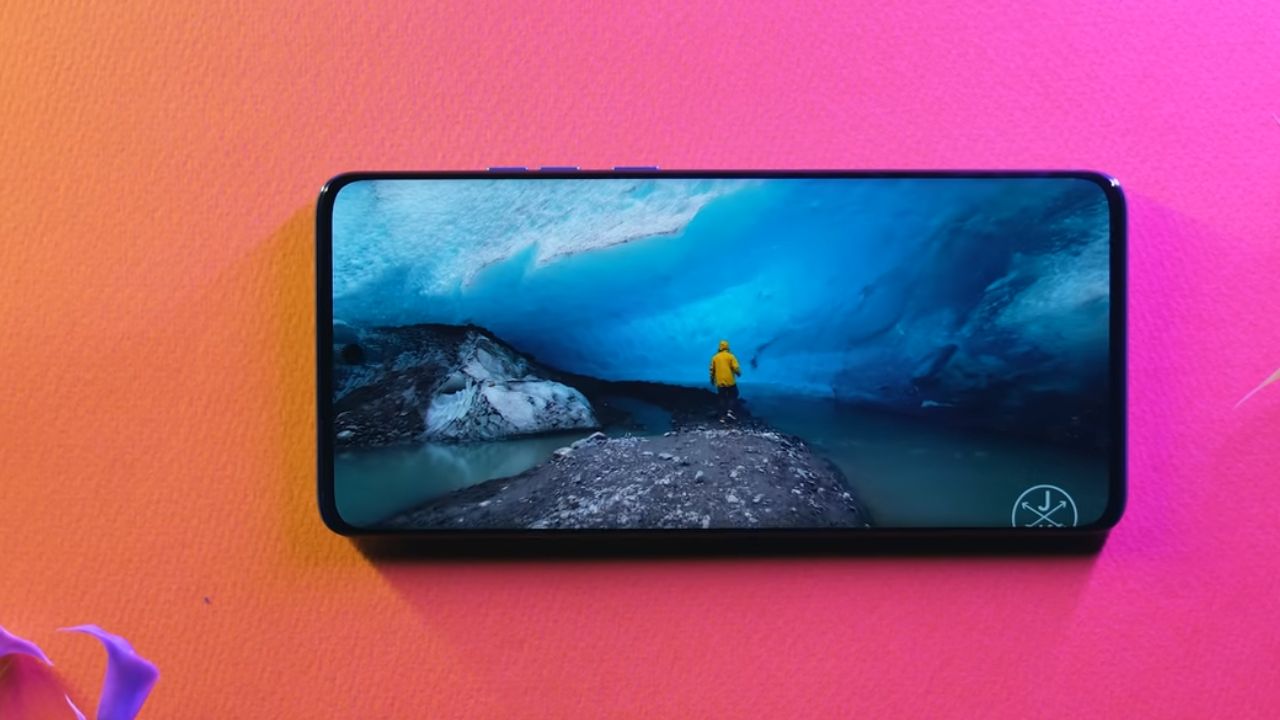
The display itself has curved edges, which not only adds to the aesthetics but also provides side illumination for incoming notifications.
Pros:
- Supports HDR10+/DCI-P3.
- 144 Hz refresh.
- Excellent color reproduction.
- Bright enough.
Cons:
- Not everyone likes curved displays.
- An unusual always-on display.
- No LTPO.
I found that the maximum brightness, hitting 1,300 nits under direct sunlight (which is essentially the peak brightness), is pretty much at the upper limit. In terms of resolution, Motorola’s Lenovo subsidiary has opted for the standard mid-range configuration, offering a resolution of 2,400 x 1,080 pixels at 402 pixels per inch (ppi). Unfortunately, this resolution can’t be reduced to extend battery life.
The Moto display stands out with its excellent contrast, dynamic color reproduction, and impressive viewing angle stability.
I should also mention that while the phone doesn’t have a conventional always-on display, Motorola does activate its own information display after detecting movement or a touch on the screen. Users also have a few settings at their disposal to personalize this feature to their liking.
In terms of in-house software, there’s another noteworthy feature called “Ready for.” This nifty tool enables you to connect your smartphone to an external monitor, whether wirelessly or through the USB port. Once connected, you can easily expand your smartphone display onto a larger screen, be it a TV or a desktop PC monitor. Pair it up with a Bluetooth keyboard or a gamepad, and you’ve got yourself a convenient setup for a more immersive experience.
Motorola Edge 40 Neo Software
Motorola seems to be making an effort to meet the expectations of its user community. Initially, we were assured of two system updates and three years of Google security patches for the Motorola Edge, but now the Neo version offers three system updates. This means that you can potentially enjoy updates up to Android 16 and receive security patches for a period of four years. While it might not be the absolute best update policy available, it’s certainly not the worst either. It’s commendable to see Motorola actively working to make user-friendly improvements.
Pros:
- Midgrade “ready for” surprises.
- Accept or reject bloatware.
- Recent policy update.
Cons:
- Google security fix is old.
For the sake of full transparency, let’s talk about the software on the Motorola Edge 40 Neo. It runs on Android 13 with Motorola’s in-house user interface, “My UX.” The most recent Google security update for this device was issued on July 1, 2023, which is decent but not as up-to-date as some other smartphones, like the one we reviewed in the Honor 90.
Motorola has also taken a different approach when it comes to pre-installed apps. To clarify, among the 79 pre-installed applications (some of which you might actually want), many are still from Google. However, a good number of them are included during the relatively relaxed initial setup process.
Motorola gives you the option to choose which of the suggested apps you’d like to install, and they are conveniently sorted by category. It’s worth noting that many of these apps are selected by default, so be sure to pay attention during setup.
While the individual design of the software is visually appealing, credit is largely due to Google for that. Otherwise, I would have already discussed the “Ready for” feature in the Display section. This feature serves as a bridge between your mobile device and a TV or PC monitor, making it a notable exception in the mid-range smartphone market.
Motorola Edge 40 Neo Performance
Contrary to the initial rumors, the Motorola Edge 40 Neo isn’t equipped with a Dimensity 1050 chipset. Instead, it runs on a MediaTek Dimensity 7030 chip, which is built on a 6 nm process. This processor is accompanied by 12 GB of LPDDR4X RAM and 256 GB of internal storage. In some regions, Motorola’s Chinese subsidiary also offers a variant with 8 GB of RAM and 128 GB of internal storage.
Pros:
- Memory is enough.
- Fast enough processor.
- No extraordinary heatwave.
Cons:
- MicroSD card not supported.
To dive into more technical details, the Motorola Edge 40 Neo houses an octa-core processor. It consists of four ARM Cortex A78 cores that can reach a maximum clock speed of 2.5 GHz, designed to handle demanding applications that require substantial computational power. Complementing these are four Cortex-A55 cores with a maximum clock speed of 2 GHz, dedicated to more power-efficient tasks.
For AI-based processes, the MediaTek APU-550 accelerator steps in, while the ARM Mali-G610-MC3 takes care of graphical tasks, doing so quite impressively, in our assessment. Unlike some other processors, such as the Snapdragon 7 Gen 1, this setup handles complex games without a hitch, as we observed during a session of Genshin Impact.
On another positive note, heat generation is barely noticeable, and thermal throttling isn’t a concern for the MediaTek SoC. But how does the processor truly perform? As always, we can turn to Geekbench 5 and 3DMark benchmarks to get a clear picture:
Motorola Edge 40 Neo Camera
Similar to the standard Motorola Edge 40 model, the Neo variant also features a dual main camera setup. Surprisingly, it shares the same 50 MP primary camera and a 13 MP ultra-wide-angle camera. However, it’s worth noting that the Neo model comes with a slightly less impressive f/1.8 aperture compared to the base model’s f/1.4 aperture. Nevertheless, daytime photos turn out beautifully, and even low-light shots are quite decent.
Pros:
- It’s remarkable how well the main camera does night photos.
- Always good daytime photos.
- Two-MP macro camera missing.
Cons:
- Front-camera night photos.
In terms of night photography, I found that the shots tend to be a bit too bright for my liking, which takes them a step away from reality. However, what truly impressed me throughout various scenarios was the camera’s ability to maintain color accuracy and contrast. Even in challenging low-light settings, such as a dimly lit subway or a shopping mall, the camera managed to capture impressive shots with a remarkable level of detail.
Speaking of positives, the camera’s 120-degree ultra-wide-angle shots, taken at an aperture of f/2.2, stand out for their lack of noticeable distortion at the edges.
Moreover, the Neo offers a versatile camera setup, including a macro mode facilitated by this ultra-wide-angle lens. It’s a nice touch to see Motorola including features like spot color mode, dual capture, gesture control, and the option to save photos in RAW format in this streamlined version of the Edge 40 series. Additionally, the portrait mode provides equivalent focal lengths of 24, 35, and 50 mm, catering to fans of depth of field effects.
Zoom shots also turn out well, thanks to the built-in optical image stabilization and a maximum magnification of 8x.
On the front, Motorola opted for a 32 MP camera housed in a punch-hole design positioned at the top center of the display. While daytime selfies come out looking decent, the camera setup doesn’t quite manage to impress due to its f/2.4 aperture and quad-pixel binning (resulting in a pixel size of 1.4 μm). It’s a bit disappointing because this camera configuration had the potential for a much higher score.
Motorola Edge 40 Neo Battery
The Motorola Edge 40 Neo is equipped with a substantial 5,000 mAh battery. In addition to the phone, the package includes a 68-W “TurboPower” charger, which is a bit of a rarity these days. In my daily usage, I found that I could comfortably go two days without needing to plug it in for a recharge. However, there was a concerning revelation during the “PC Mark Work 3.0” battery benchmark test.
Pros:
- Battery capacity is enough.
- Includes 68 W charger.
- Great charging times.
Cons:
- The battery benchmark was weak.
It does appear that we could have borrowed some insights from the Edge 40’s review if we were so inclined. Unfortunately, due to the limited duration of our review, we couldn’t verify if the same applies to the Edge 40 Neo, but we would have included it if we could.
For now, our battery test was conducted using the usual settings. This involved activating flight mode, setting the display brightness to 200 nits, configuring the refresh rate to automatic, and kicking off the test with a fully charged battery.
In our test scenario, the phone lasted for 9 hours and 12 minutes before the battery level hit 20 percent. While these results are respectable, they’re not exactly groundbreaking. Ideally, we’d expect at least 11 hours of endurance.
Charging the device with the “TurboPower” charger yielded impressive results. After just 5 minutes of charging, it replenished 20 percent of the battery capacity, and within 20 minutes, the battery was already halfway charged. It took less than 50 minutes to reach a full charge. These results are quite satisfying in my book. It’s worth noting that the Motorola Edge 40 Neo does not support wireless charging.
End Notes
The Motorola Edge 40 Neo has truly taken the mid-range smartphone market by surprise, offering an astounding price of just €399. It’s available in three stylish colors, and the textured imitation leather back adds a touch of sophistication. It appears that Motorola may have taken some cues from the NextPit review of the other two Edge 2023 models or perhaps simply paid attention to user feedback.
While there’s room for improvement in the software update policy, given the not-quite-latest security patch, the two main cameras have significantly upped their game. They’re now capable of delivering impressive shots not only during the day but also in low-light conditions, effectively erasing the memories of past pixelated night photos.
Motorola has always been known for its reliable displays, and the Moto Edge 40 Neo is no exception with its impressive 144 Hz refresh rate. Although the MediaTek Dimensity processor might not be a groundbreaking powerhouse, it works well in conjunction with the generous 12 GB of RAM and 256 GB of internal storage, ensuring a smooth experience even for gaming enthusiasts.
However, our overall positive impression of this mid-range Motorola handset was slightly marred by the “PC Mark Work 3.0” battery test results. While the phone’s fully charged battery can easily keep you going for two days without needing a recharge, the benchmark test didn’t quite confirm such longevity.
I hope I’ve managed to convey some of my enthusiasm and explain why the Motorola Edge 40 Neo offers an exceptional price-performance ratio for a mid-range smartphone. If you’re not completely impressed,

